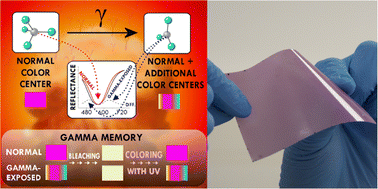Reusable radiochromic hackmanite with gamma exposure memory†
Abstract
Radiochromic films are used as position-sensitive dose meters in e.g. medical physics and radiation processing. The currently available films like those based on lithium-10,12-pentacosdiynoate or leucomalachite green are either toxic or non-reusable, or both. There is thus a great need for a sustainable solution for radiochromic detection. In the present work, we present a suitable candidate: hackmanite with the general formula Na8Al6Si6O24(Cl,S)2. This material is known as a natural intelligent material capable of changing color when exposed to ultraviolet radiation or X-rays. Here, we show for the first time that hackmanites are also radiochromic when exposed to alpha particles, beta particles (positrons) or gamma radiation. Combining experimental and computational data we elucidate the mechanism of gamma-induced radiochromism in hackmanites. We show that hackmanites can be used for gamma dose mapping in high dose applications as well as a memory material that has the one-of-a-kind ability to remember earlier gamma exposure. In addition to satisfying the requirements of sustainability, hackmanites are non-toxic and the films made of hackmanite are reusable thus showing great potential to replace the currently available radiochromic films.



 Please wait while we load your content...
Please wait while we load your content...